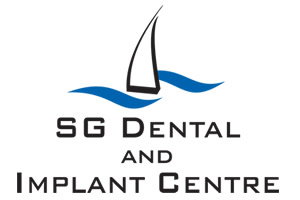Different Types Of Dental Fillings
A look at the filling options that are available in modern dental care.
One of the most common procedures that we carry out at Mike Allen’s Dental Practice, and probably every other practice in the UK, is a filling. These can vary in size from a very small one to those used for large cavities in cases where decay has been allowed to advance. The procedure is usually carried out using a local anaesthetic and is generally a relatively short one.
There are many different types of fillings that are now available for us to use. These vary in qualities such as appearance, as well as the level of strength that they offer. For this reason, not all types of fillings are suitable for every situation.
In this blog, we will take a look at the options that are available for our Burton patients when they are in need of a filling.
Amalgam
These are perhaps the best known type of filling, and, until relatively recently, were the only viable option, especially for larger fillings. The advantage of this type of material is that it is very strong, and can be used on even very large fillings. It is also hard wearing and will withstand a great deal of stress.
It is not without its ‘faults’ though. Amalgam is made from a combination of metals, and accordingly, has a metallic appearance that is very dark in colour. This means that amalgam fillings are very visible, especially if used on the teeth that show when we smile. Over time, amalgam fillings can also shrink a little. This can leave tiny gaps between the filling and the natural tooth. Where there is a gap, bacteria are able to enter, and further decay is quite possible. Amalgam also sometimes requires more of the natural tooth to be removed than is the case with some other alternatives. There are also some concerns about the mercury component used in amalgam but the dental authorities have deemed it safe to use other than for a few categories of patients.
Composite/White fillings
Although once considered to be inferior in quality to amalgam, advances in materials mean that they are now almost as strong as the more traditional amalgam fillings. This is great news for our patients as they can also be produced in a shade that matches your natural teeth, leaving them looking as natural as possible. This type of filling is made from a resin base with glass and/or ceramic particles in it. In addition to the strength of newer types of this filling material, unlike amalgam, it will not shrink and therefore reduces the risk of further decay. Because it bonds extremely well to the natural tooth, it is also likely that less of the natural tooth will need to be removed, making the treatment less invasive and preserving more of the natural tooth.
Glass ionomer fillings
These are less widely used for general fillings as they lack the strength of both amalgam and white fillings. For this reason, they are generally only used on baby teeth and on the parts of the teeth that are not used for biting, such as the necks of the teeth. As with white fillings, glass ionomer bonds well to the natural tooth and therefore less preparation work is involved. One area where glass ionomer does have an advantage over other fillings is that it can slowly releases fluoride and help to protect the tooth. Unfortunately, its weaker points mean that, for most fillings, this will not be applicable.
Gold fillings
It goes without saying that gold fillings are very expensive and are therefore rarely used. They do offer a high level of strength but are also very visible, a quality which is attractive for some patients. If you are interested in a gold filling, please talk to one of our Burton dentists about this.
Inlays and onlays
These are usually made from porcelain, often using digital technology. They are excellent for the rear teeth where a very large cavity is present. They resolve the problem of maintaining a high level of strength in the rear teeth that undergo a lot of pressure when eating, whilst also retaining a natural appearance. As these are made from impressions that we take at Mike Allen’s Dental Practice, and which are then sent to a laboratory for the inlays or onlays to be produced, you will typically be given a temporary filling to protect the tooth until your restoration is ready.
Although we would prefer our patients not to ever need a filling, it is always good to know that, if you do, there are materials that are suitable for all types. At Mike Allen’s Dental Practice, we do our best to provide a first class service to all of our patients and offer a wide range of treatments to both restore damaged teeth or to help you with a smile makeover to bring out the very best in your smile.
To make an appointment at our Burton dental clinic, please call us on 01283 845345.
Mike Allen – Principal Dentist – GDC 55931
